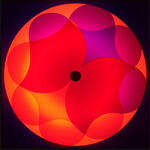Caraguatá textiles are exclusively found in indigenous communities in Paraguay, particularly in the Paraguayan Chaco. According to the respective indigenous communities, it is the women artisans who work with the textiles in various ways.
The main indigenous groups producing Caraguatá fiber are Ayoreo, Nivaclé, Ishir, Manjui, Enxet Sur, and Enlhet.
The fiber is extracted from a species of bromeliad (Bromelia Hieronymil), and the entire plant is utilized, as its roots also serve as food. The leaves of the plant are pressed along their entire length to extract moisture until they are dry and long. These fibers are washed, sun-dried, then dyed with natural pigments, spun, and handwoven. The structure of the textiles, patterns, and colors distinguish each indigenous group. For instance, Ayoreo and Ishir textiles predominantly use red and black along with the natural color of the bleached fiber. Nivaclé and Manjui work with shades of browns, yellows, and even greens. Enxet and Enlhet often maintain the natural color of the fiber in their textiles.


















